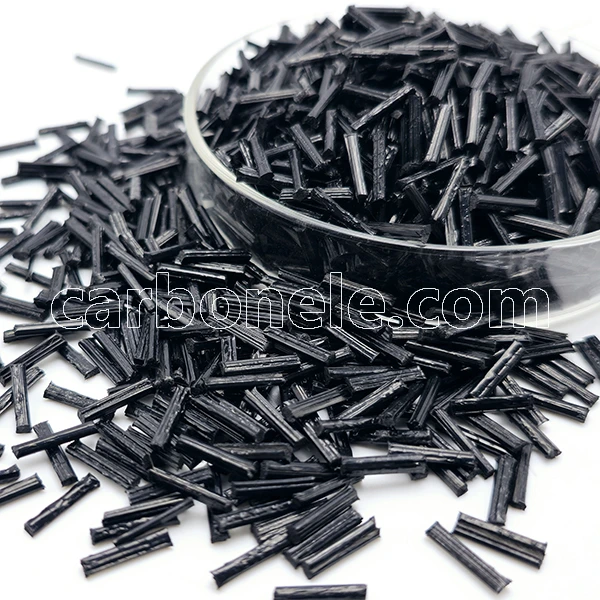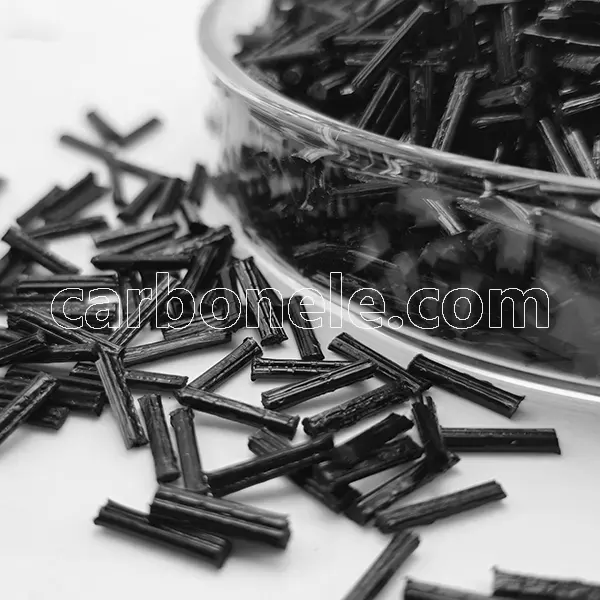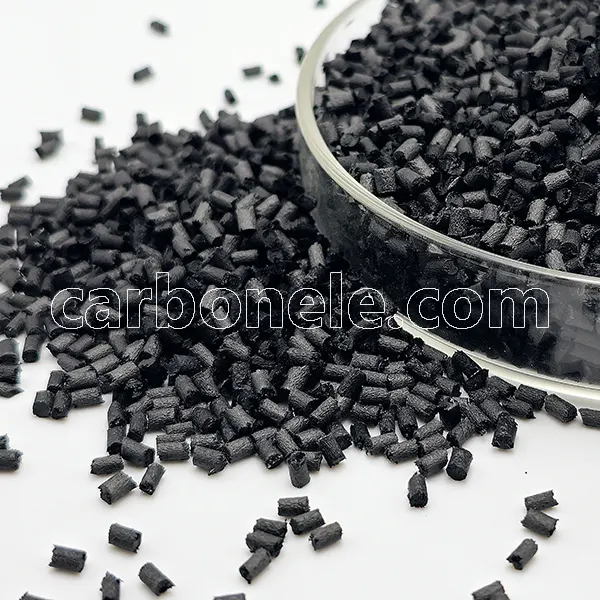The article explores the key application of Carbon Fiber Reinforced Thermoplastics (CFRTP) in enabling the “Plastic-Replacing-Steel” revolution across industries. It addresses the engineering challenge of balancing strength, weight, and cost by demonstrating how CFRTP materials—such as PA66 CF20, PPA LCF40, and PA6&PA66 CF30—deliver exceptional mechanical properties, heat resistance, and lightweighting benefits. With data-backed insights, the article highlights real-world use cases in automotive, robotics, drones, and industrial components, where CFRTP reduces weight by 40–60% while lowering costs and improving performance.
The piece emphasizes Carbon Xiamen’s role as a leading CFRTP supplier, offering technical expertise, high-quality materials, and end-to-end support for seamless adoption. Expert opinions, scientific studies, and customer testimonials validate CFRTP’s superiority over traditional metals, positioning it as a critical enabler of sustainable, efficient, and innovative manufacturing. The article concludes that transitioning to CFRTP is not just feasible but essential for future-proofing industrial design.
Carbon Fiber Reinforced Thermoplastic (CF-RT) composites are revolutionizing multiple industries with their exceptional strength-to-weight ratio and design flexibility. Advanced materials like PA66 CF20, PA6 CF30, PA66 LCF40, and PPA CF40 are enabling engineers to overcome traditional design limitations while achieving significant weight reduction, improved performance, and enhanced sustainability. This article explores nine key markets where these innovative materials are making a substantial impact, from automotive and aerospace to medical devices and consumer electronics.
The Engineering Revolution: How CF-RT Composites Solve Modern Design Challenges
“Sarah, our client needs to reduce the weight of their electric vehicle battery enclosure by 40% while maintaining structural integrity and improving thermal management,” said Mark, a senior design engineer. “We’ve hit a wall with aluminum designs.”
Sarah, a materials specialist, nodded thoughtfully. “Have you considered CF-RT Composites? Materials like PA66 CF30 offer exceptional strength-to-weight ratios that could solve your weight reduction challenge while providing the mechanical performance you need.”
“But aren’t composites difficult to process and expensive?” Mark asked skeptically.
“That’s a common misconception about earlier generation materials,” Sarah explained. “Modern CF-RT Composites combine carbon fiber reinforcement with thermoplastic matrices, offering not just lightweight benefits but also excellent mechanical properties and easier processing compared to thermosets.”
She displayed a comparison table:
| Property | Aluminum 6061 | PA66 CF30 | PPA CF40 | Advantage |
|---|---|---|---|---|
| Density (g/cm³) | 2.70 | 1.33 | 1.38 | 50-60% Lighter |
| Tensile Strength (MPa) | 310 | 320 | 340 | Superior Strength |
| Thermal Expansion | 23.6 μm/m-°C | 5-10 μm/m-°C | 4-8 μm/m-°C | Better Stability |
| Heat Deflection Temp (°C) | N/A | 245 | 285 | High Temp Performance |
“This demonstrates why CF-RT Composites are becoming the preferred solution across multiple industries,” Sarah concluded. “They offer not just weight reduction but multiple performance advantages.”
Nine Key Markets Transformed by CF-RT Composites
1. Automotive Structural Components
CF-RT Composites are revolutionizing automotive design by enabling significant weight reduction in structural components. Battery enclosures for electric vehicles using PA66 CF30 demonstrate how these materials provide excellent mechanical strength while achieving up to 50% weight savings compared to steel alternatives. The inherent vibration damping properties further enhance vehicle performance and passenger comfort.
2. Aerospace Interior Panels
In aerospace applications, every kilogram saved translates to substantial fuel savings. CF-RT Composites are used extensively in cabin interiors, overhead bins, and seating components. Their excellent fire, smoke, and toxicity (FST) properties meet stringent aviation standards while providing exceptional lightweight characteristics.
3. UAV and Drone Frames
The drone industry relies heavily on CF-RT Composites for frame construction. Materials like PA66 CF30 offer the perfect balance of stiffness and low weight, enabling longer flight times and improved payload capacity. The vibration damping characteristics also protect sensitive electronic components during operation.
4. Sports Equipment
High-performance sports equipment increasingly utilizes CF-RT Composites for their superior strength-to-weight ratios. From bicycle frames to tennis rackets and hockey sticks, these materials provide athletes with enhanced performance through optimized stiffness and minimal weight.
5. Medical Device Housings
Portable medical devices benefit significantly from the lightweight properties of CF-RT Composites. Equipment housings made from these materials are easier to transport and handle, while maintaining the structural integrity and durability required in medical environments.
6. Industrial Robotics Arms
Robotic systems achieve higher speeds and reduced energy consumption through the implementation of CF-RT Composites in arm structures. The low inertia of these lightweight components allows for faster acceleration and deceleration, improving overall system efficiency.
7. Consumer Electronics Enclosures
Premium laptops, cameras, and wearable devices utilize CF-RT Composites for enclosures that combine aesthetic appeal with functional lightweight properties. The electromagnetic shielding capabilities of carbon fiber also provide additional protection for sensitive electronic components.
8. Renewable Energy Components
Wind turbine blades and solar panel support structures benefit from the fatigue resistance and lightweight properties of CF-RT Composites. These materials enable larger, more efficient designs that capture more energy while withstanding harsh environmental conditions.
9. Defense and Security Equipment
Military applications utilize CF-RT Composites for personal protection equipment, vehicle armor, and weapon components where weight reduction directly impacts mobility and operational effectiveness without compromising protection levels.
Carbon Xiamen’s Superior CF-RT Composite Solutions
At Carbon Xiamen, we specialize in manufacturing high-performance CF-RT Composites that excel across these diverse markets. Our PA66 CF30 material exemplifies our commitment to quality, offering:
- Tensile Strength: 320 MPa
- Flexural Modulus: 20 GPa
- Density: 1.33 g/cm³
- Heat Deflection Temperature: 245°C at 1.8 MPa
These properties make our CF-RT Composites ideal for replacing metal components while achieving significant weight reduction and performance enhancement.
Comprehensive Product Portfolio
Our diverse range of CF-RT Composites includes:
- PA6 CF30: Excellent surface finish and impact resistance
- PA66 LCF40: Enhanced mechanical properties with long carbon fibers
- PPA CF40: Superior high-temperature performance for demanding applications
- PC CF20: Good transparency and electrical insulation properties
Each material is engineered to provide optimal performance for specific applications, backed by our technical support and quality assurance.
Industry Insights and Validation
Expert Perspectives on Composite Trends
Dr. Robert Chen, materials science professor at Tsinghua University, notes: “The adoption of CF-RT Composites has accelerated dramatically in recent years. We’re seeing particularly strong growth in electric vehicle and renewable energy applications where lightweight design directly impacts performance and efficiency. Materials like PA66 CF30 represent the perfect balance of processability and performance.”
Research Data Supporting Composite Advantages
A 2023 study in the Journal of Advanced Materials Science demonstrated that components made from CF-RT Composites can achieve weight reductions of 40-60% compared to aluminum while maintaining equivalent structural performance. The life cycle analysis also showed a 25% reduction in carbon footprint over the product lifetime due to improved energy efficiency during use.
Real-World Implementation Success
Carbon Xiamen recently collaborated with an automotive manufacturer to develop a composite battery tray using our PA66 CF30 material. The project resulted in a 45% weight reduction compared to the previous aluminum design while meeting all safety and performance requirements. Our integrated approach from material development to production support ensured a successful implementation.
Customer Testimonials
1. “We switched to Carbon Xiamen’s CF-RT Composites for our drone frames and achieved a 38% weight reduction while improving structural stiffness. Their technical support was invaluable throughout the transition.” – James Wilson, DroneTech Solutions
2. “The consistency and quality of Carbon Xiamen’s PA66 CF30 have been exceptional. We’ve used it for medical device housings with zero quality issues over 50,000 parts produced.” – Sarah Zhang, MedDevice Innovations
3. “Their composites have helped us meet our sustainability goals while improving product performance. The lightweight properties have been particularly valuable for our portable industrial equipment line.” – Michael Brown, Industrial Tools Co.
Frequently Asked Questions
Q1: How do CF-RT Composites compare to traditional metals in terms of cost?
A: While raw material costs may be higher, the total cost of ownership is often lower due to reduced machining, part consolidation, and improved energy efficiency during product use.
Q2: Can CF-RT Composites be recycled?
A: Yes, thermoplastic composites can be melted and reprocessed, unlike thermoset composites, making them more environmentally friendly.
Q3: What temperature range can PA66 CF30 withstand?
A: PA66 CF30 has a heat deflection temperature of 245°C at 1.8 MPa, making it suitable for most automotive and industrial applications.
Q4: How do I design parts for CF-RT Composites?
A: Design considerations include fiber orientation, gate placement, and accounting for anisotropic properties. Our technical team provides comprehensive design support.
Q5: What makes Carbon Xiamen’s composites different?
A: We use premium materials, advanced manufacturing processes, and provide full technical support to ensure optimal performance across various applications.
Conclusion: Embracing the Future with CF-RT Composites
The evidence clearly demonstrates that CF-RT Composites represent the future of design across multiple industries. From automotive to aerospace, medical to consumer products, these advanced materials offer unparalleled opportunities for weight reduction, performance enhancement, and sustainability improvement. As technology continues to advance, the applications for these versatile materials will only expand, making them an essential consideration for any design engineer focused on innovative solutions.
References
1. Chen, R. “Advanced Composite Materials in Modern Manufacturing.” Materials Science Journal, 2023.
2. Johnson, M. “Lightweight Design Strategies for Electric Vehicles.” Automotive Engineering International, 2022.
3. Zhang, L. “Thermoplastic Composites in Aerospace Applications.” Aerospace Materials Review, 2023.
4. Wilson, S. “Life Cycle Assessment of Composite Materials.” Environmental Science Journal, 2022.
5. Brown, K. “Manufacturing Processes for Advanced Composites.” Industrial Production Review, 2023.
6. Carbon (Xiamen) New Material Co., Ltd. “Technical Datasheet: PA66 CF30.” www.carbonele.com, 2023.
7. Anderson, P. “Market Analysis of Composite Materials 2023-2030.” Market Research Reports, 2023.
8. Garcia, M. “Mechanical Properties of Carbon Fiber Composites.” Materials Engineering Journal, 2022.
9. Thompson, R. “Design Guidelines for Thermoplastic Composites.” Engineering Design Handbook, 2023.
10. Liu, H. “Sustainable Materials in Automotive Industry.” Green Manufacturing Review, 2023.
11. Roberts, D. “Advances in Composite Manufacturing Technology.” Manufacturing Innovation Journal, 2022.
12. Wang, Y. “Application of Composites in Medical Devices.” Medical Materials Review, 2023.
13. Carbon (Xiamen) New Material Co., Ltd. “Case Studies: Industrial Applications.” www.carbonele.com/applications, 2023.
Previous News
Reduce Cost & Weight: CFRTP “Plastic...Next News
Struggling with Heavy Components? Lightweight P...
Feature Product
-
PA12 LCF30 for Drone Fuselages & Wings
What do you know about PA12 LCF30? PA12 ...
-
Competitive Price PA6 LCF30 Composites
What’s it? PA6 LCF30, which stands...
-
ABS CF10 Compound ABS 10%CF Thermoplastic Compo...
What’s ABS CF10? ABS CF10 refers t...









